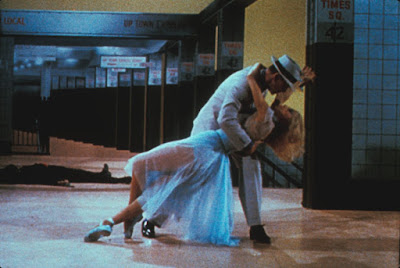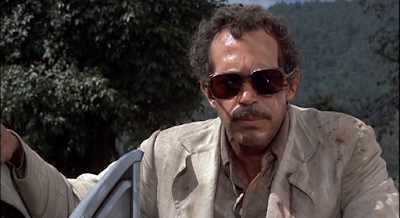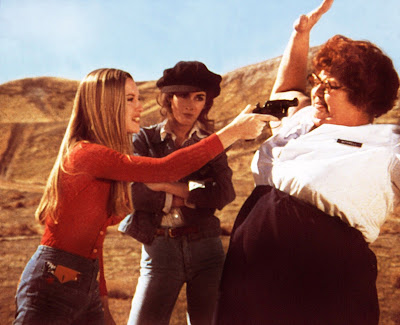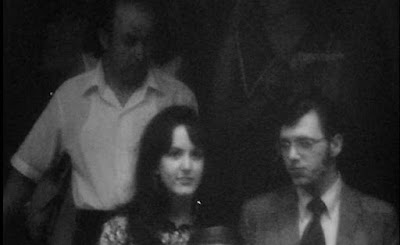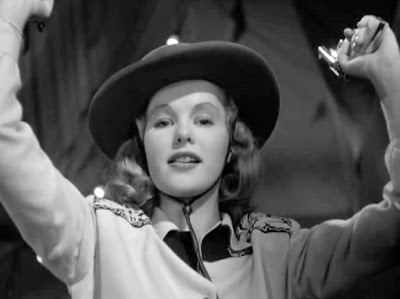Bring Me The Head Of CinemaTexas!: Notes on the Next Essential Cinema Series

This week’s Austin Chronicle presents an informative overview of AFS’ upcoming CinemaTexas Rewind series. Here’s a little bit more about CinemaTexas and the films to be screened, as well as the new book that has brought CinemaTexas back into the spotlight.
From the early ‘70s through the mid ‘80s, there was an on-campus film-programming initiative at the University of Texas called CinemaTexas. Every Monday through Thursday night there was a separate two movie lineup programmed by Radio-Television-Film Department faculty and graduate students.
The unique set of influences and doctrines that held sway at the time, and the prodigious talent pool of the student and faculty collaborators make these programs of ongoing interest today.
Directed by Vincente Minnelli
“Before Minnelli, the backstage musical always excluded itself by framing the musical action with the stage, even if from that island of dramatic safety it took off into the empyrean as with Busby Berkeley. In contrast, Minnelli has always accented the abstraction of the film image by framing it against a backdrop of artificiality in other mediums. … The question still remains, though, why are these actions possible, and even essential, if the cinema is thought to be a fundamentally ‘realist’ medium. The answer is, of course, the star system and the musical actor. In the backstage musical, we know from the very first that all the kids are singers and dancers waiting for the chance to be stars.”
– David Rodowick and Ed Lowry, Vol. 12, No. 4, Feb. 21, 1977.
SUNRISE
Directed by F.W. Murnau
USA, 1927, 1h 34min, 35mm
“Hollywood’s dominance of the world film market has been challenged but rarely in the eighty-odd years since the birth of the motion picture. Perhaps the most serious challenge was that posed by the German film industry during the 1920s. … Hollywood’s response to the German challenge was simple: bring all of that talent to the United States. Make the top German filmmakers offers they couldn’t refuse; simultaneously weaken the German film industry and build up Hollywood.”
– Warren Spector, Vol. 22, No. 1, Jan. 29, 1982.
BRING ME THE HEAD OF ALFREDO GARCIA
Directed by Sam Peckinpah
US/Mexico, 1975, 1h 52min, 35mm
“Generally regarded as a failure when it was released, the film’s critical stature has only slightly improved over the years. To set the record straight: Bring Me the Head of Alfredo Garcia is one of the most important and brilliant of Peckinpah’s films. In many ways it represents the culmination of the first (and so far greatest) period of his work. It is an ugly, vicious film about not very glamorous people engaged in ugly, vicious activities.”
– Louis Black, Vol. 19, No. 2, Oct. 28, 1980.
CAGED HEAT
Directed by Jonathan Demme
USA, 1974, 1h 23min, 35mm
Thu April 12: This screening introduced by original CinemaTexas alumnus and noted film critic Marjorie Baumgarten with audience discussion to follow.
“In 1970 Roger Corman’s New World Pictures released The Big Doll House, a film which began a whole cycle of women-in-prison pictures. Where Hollywood had occasionally turned out films in this vein [they] were largely a variation on the standard (men’s) prison genre. Big Doll House, however, generated several films which followed many of the conventions it had established: woman warden/male doctor, integrated cellmates, acceptance of lesbian relationships and, especially, women armed and dangerous at the end. … Caged Heat is at once the best of the films in this genre and the ultimate send-up of them.”
– Louis Black, Vol. 14, No. 3, April 3, 1978.
AVANT CINEMA: CORRUPTION OF THE DAMNED & NECROLOGY
Directed by George Kuchar, Standish Lawder
On NECROLOGY: “”The credits listed at the end of the film are woefully incomplete. The following is a complete breakdown of the relevant statistics regarding Necrology. Total performers: 326 (191 male, 135 female) Credited performers: 76 (53 male, 23 female) Uncredited performers: 250 (138 male, 112 female). In examining these statistics, certain patterns come immediately to mind, patterns which raise serious questions about Lawder’s integrity. Most obvious is the implied sexism of the credits. Only 17.04% of the women in the film are credited, whereas fully 27.75% of the men receive credits.”
– Nick Barbaro, Vol. 21, No. 3, Dec. 7, 1981
GUN CRAZY
Directed by Joseph H. Lewis
USA, 1950, 1h 27min, 35mm
Thu, Apr 19: This screening followed by a panel discussion with select CinemaTexas alumni focusing on the influence of their mentor Ed Lowry
Encore screening Sun, Apr 22
“The most outstanding sequence in the whole film is the single shot bank robbery; for, if nothing else about the film were notable, this shot would make it all worthwhile and in a better known film would likely be touted the world round. Lewis sets his camera in the back seat of the car the couple is driving to a bank robbery. … By keeping the camera pointed always forward, Lewis denies us the tension-releasing effect of being able to look backward to check for ourselves. Fourteen years later, in Bande à Part, Godard was to ‘innovatively’ place his camera in the back seat of a car, watching only the backs of the heads of the couple in the front seat as they drove and talked.”
– Ed Lowry, Vol. 15, No. 3, Nov. 29, 1978.

